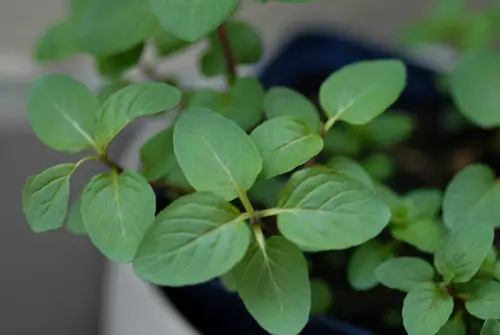Peppermint, a universally-loved herb, is both admired for its vibrant flavor and appreciated for its myriad medicinal properties. A hybrid between watermint and spearmint, peppermint has become a staple in culinary arts, aromatherapy, and traditional medicine alike. Its cool, invigorating taste and scent have made it a popular ingredient in teas, candies, and even pharmaceutical products.
The leaves of the peppermint plant contain menthol, a natural compound that’s responsible for its characteristic cooling sensation. Aside from its refreshing flavor, peppermint is known to aid in digestion, alleviate headaches, and provide relief from cold symptoms. It’s a versatile plant that’s as handy in the kitchen as it is in the medicine cabinet.
Peppermint is not just confined to commercial products; many gardeners enjoy growing it at home. It’s relatively easy to grow, adding a touch of green to gardens, patios, or even indoor spaces. Whether you’re cultivating it for culinary purposes or as an ornamental plant, peppermint can be a delightful addition to your home.
| Aspect | Details |
|---|---|
| Common Names | Peppermint |
| Botanical Name | Mentha × piperita |
| Family | Lamiaceae |
| Plant Type | Perennial Herb |
| Mature Size | 12-36 inches |
| Sun Exposure | Full Sun to Partial Shade |
| Soil Type | Rich, Moist, Well-Drained |
| Hardiness Zones | 3-9 |
| Native Area | Europe |
Peppermint Care
Peppermint is a vigorous grower that often spreads extensively in the garden. It thrives in cool, moist conditions and can grow in various types of soil as long as it’s well-drained. While it’s quite resilient, care must be taken to control its growth, as it can become invasive.
The best way to grow peppermint is to contain it within barriers or plant it in pots. Regular pruning is necessary to keep the plant healthy and to prevent it from taking over other plants in the garden. Fertilizing is typically not required, but an all-purpose plant food can be used if growth appears slow.
Light Requirement for Peppermint
Peppermint prefers full sun to partial shade. It can grow in various lighting conditions but thrives best with at least 4-6 hours of sunlight daily. Providing the right amount of sunlight ensures healthy growth and more flavorful leaves.
Soil Requirements for Peppermint
Rich, moist, and well-drained soil is ideal for peppermint. A slightly acidic to neutral pH range (6.0-7.0) works well. While the plant is adaptable to different soil types, proper drainage is vital to prevent root rot.
Water Requirements for Peppermint
Peppermint likes consistently moist soil but not waterlogged conditions. Regular watering is necessary, especially during dry periods. The soil should feel damp to the touch but never soggy.
Temperature and Humidity
Peppermint is hardy and can tolerate a wide range of temperatures. It thrives in a cool climate with temperatures between 55-70°F (13-21°C). Humidity levels don’t usually affect the plant, but it prefers moist conditions.
Fertilizer
Peppermint generally doesn’t require fertilization if planted in rich soil. However, a balanced, all-purpose fertilizer can be used once a month during the growing season if the soil is less fertile.
Pruning Peppermint
Regular pruning is essential for controlling peppermint’s growth and encouraging new, bushy growth. Removing flowers and trimming back stems will keep the plant compact and increase leaf production.
Propagating Peppermint
Peppermint is easily propagated through stem cuttings or division. Simply take a cutting, remove the lower leaves, and plant it in moist soil. The plant will usually root within a couple of weeks.
How To Grow Peppermint From Seed
Growing peppermint from seed can be challenging, as the seeds are often sterile. It’s usually more successful to propagate from cuttings or purchase young plants from a nursery.
Common Pests & Plant Diseases
Aphids
Small, sap-sucking insects that can be controlled with insecticidal soap.
Spider Mites
Tiny insects that create webs; can be treated with a miticide.
Mint Rust
Fungal disease that appears as orange spots; can be treated with fungicides.
Common Problems With Peppermint
Leggy Growth
Caused by insufficient sunlight, leading to weak and stretched stems.
Yellowing Leaves
May result from overwatering or poor drainage.
Invasive Growth
Peppermint can spread aggressively if not contained.
Pro Tips
- Plant peppermint in containers to control its spread.
- Harvest leaves in the morning for the best flavor.
- Divide established plants every 2-3 years to rejuvenate growth.




